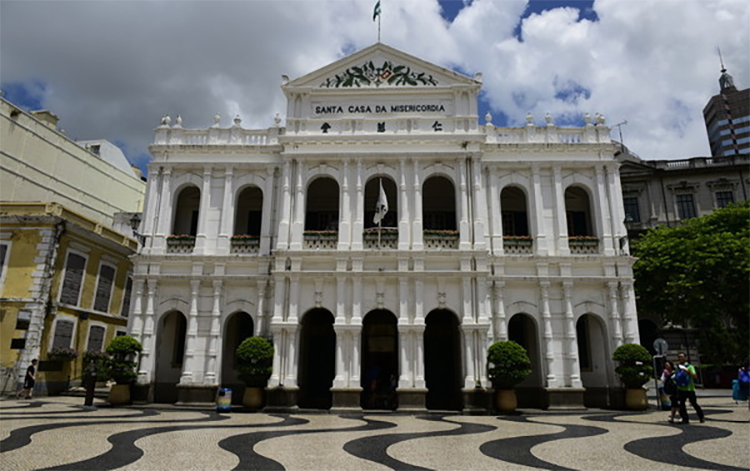Discover Macau’s Misericórdia Museum on the UNESCO Memory List: 400 Years of Charity
Introduction
Push open the pale-yellow Neoclassical arch of the Misericórdia building and time seems to rewind to 1569—shortly after Portuguese ships first moored near A-Ma Temple, Macau’s first Western-style charity institution took root. Today, the museum quietly tells a little-known epic with yellowed charity ledgers, a creole artist’s Madonna, and rusted 19th-century surgical tools: how Renaissance-era philanthropic ideas were woven into southern Chinese everyday life.
1. Core features: A fusion of East-West charitable memory
This museum stands out among Macau’s religious sites for focusing on ‘charity’ as a distinctive cultural bridge. Rather than being a conventional church or history museum, it presents 400 years of continuous medical records, orphan adoption contracts, and devotional art to show the symbiosis between Portuguese Catholic practice and Lingnan local culture. Its collections were shortlisted for UNESCO’s Memory of the World in 2019, underscoring their irreplaceable value.
2. The building is the first exhibit
The three-story façade—pale green shutters and Corinthian columns—is itself part of Macau’s World Cultural Heritage. Rebuilt in the 18th century in Neoclassical style, its window pediments and wrought-iron second-floor railings conceal subtle Eastern details typical of Macanese (taishēng Patuá) aesthetics. Note the double-flight marble staircase in the courtyard, designed by the same architect who worked on the Governor’s Palace. When sunlight pours through the skylight, cross-shaped light patterns fall across the steps.

3. Four must-see treasures
– 1662 Macau Misericórdia statutes (parchment)
A yellowed Portuguese manuscript recording the operational rules of Asia’s oldest Western charity system. Chinese marginal notes show local gentry involvement. An interactive touchscreen next to the display allows visitors to read line-by-line English and Chinese translations.
– Pietà-style Madonna (1740)
This wooden Madonna wears Ming-dynasty robes; her facial modeling blends European sculptural volume with the compassionate expression of Mazu statues. It exemplifies Macanese artists’ fusion of Eastern and Western aesthetics. Each December 8, she is still carried in the Feast of the Immaculate Conception procession.
– Bastos, The Holy Family’s Flight into Egypt (oil painting)
A 19th-century mixed-heritage artist’s masterpiece that transplants the biblical scene into Lingnan scenery: oyster-shell windows and banana leaves appear in the background. The original is shown only three months a year, but a 4K reproduction at the entrance includes AR features that reconstruct the artist’s creative process.
– 1887 obstetric surgical set
Silver-plated instruments ordered from Lisbon and shipped across the sea, witnessing the birth of Macau’s first Western-style maternity hospital. Look closely for the primitive breech-adjustment tool shaped like a heron’s beak, whose design may have been inspired by acupuncture implements.
4. Immersive experience design
The museum uses a time-space corridor narrative: the second floor is divided into five century-based galleries, guided by brass year markers in the floor. The third gallery’s interactive installation is unforgettable—stand in the marked spot and wave your hand; a holographic projection enacts a 19th-century Chinese woman collecting quinine at the Misericórdia pharmacy, accompanied by layered Cantonese and Portuguese market sounds.

5. Practical visiting guide
Best time: After 15:00, when slanting light enhances the courtyard patterns. Weekday afternoons avoid weekend morning masses.
Smart guide: Scan the QR code for an English audio guide with original Cantonese and Portuguese recordings (deposit MOP 20; cash only).
Hidden photo spot: A small balcony outside the third-floor archives offers a secret view of Senado Square—perfect at sunset for framing the Rosary Church and the museum dome together.
Basic information
Address: No.2, Rua Direita do Senado (right alley of Misericórdia), Senado Square, Macau (5-minute walk from Ruins of St. Paul)
Opening hours: 10:00–13:00, 14:30–17:30 (closed Tuesdays and Chinese New Year public holidays)
Admission: MOP 15 (free for 65+, half-price with student ID)
Bus: Routes 3, 4, 6A, 8A, 18A to ‘San Ma Lou’ stop

Conclusion
When you touch the Qianlong-era ledger that lists ‘213 recipients of free medical care and medicine,’ you grasp the museum’s true value: it is more than a witness to colonial history; it reveals the most precious common language between civilizations—compassion for human suffering. Combine your visit with nearby Rosary Church and St. Augustine’s Church to form a ‘Macau religious charity trail’ and fully feel this city’s warm soul.


